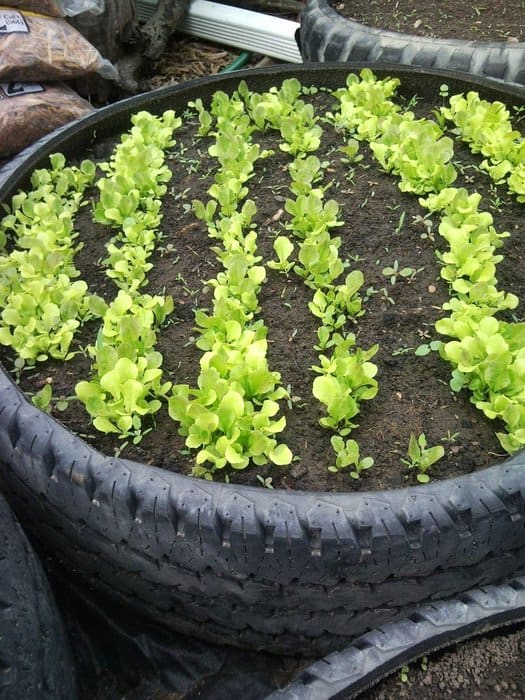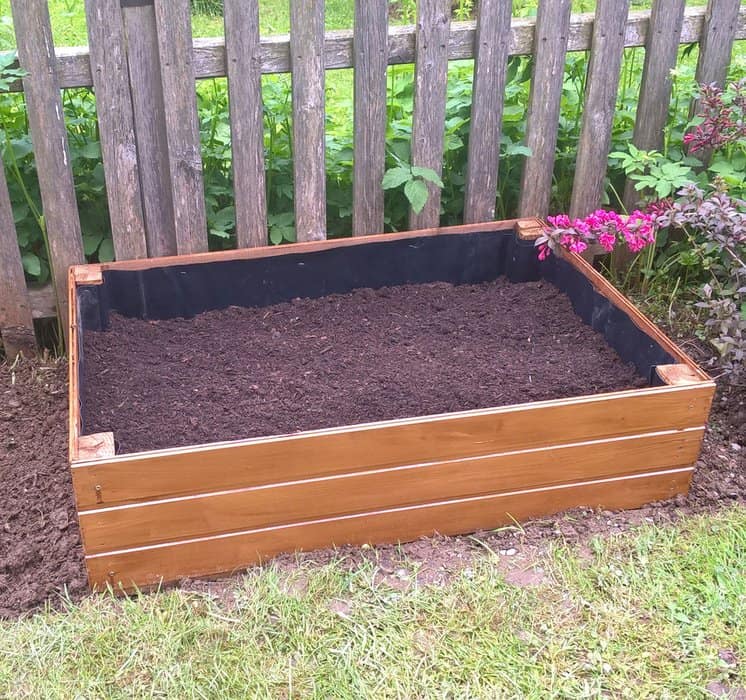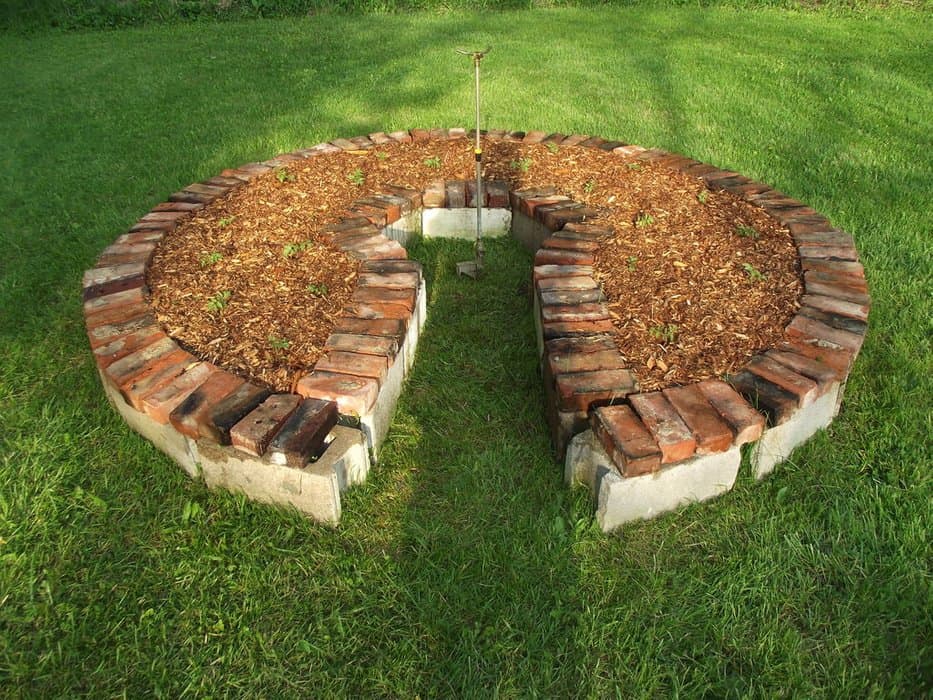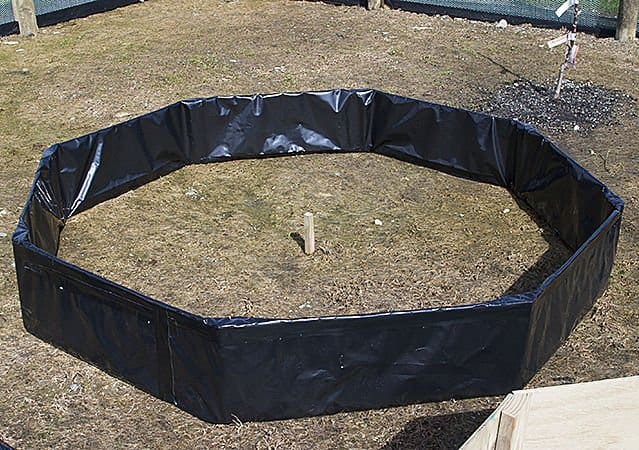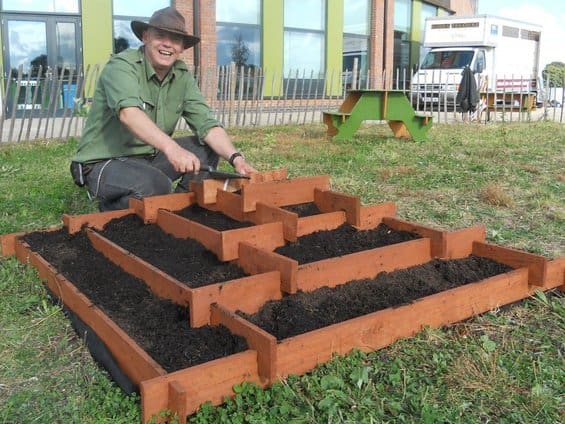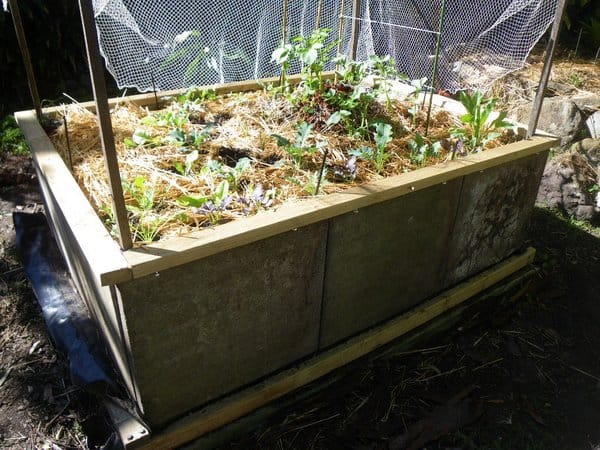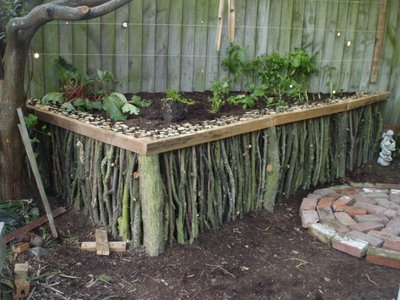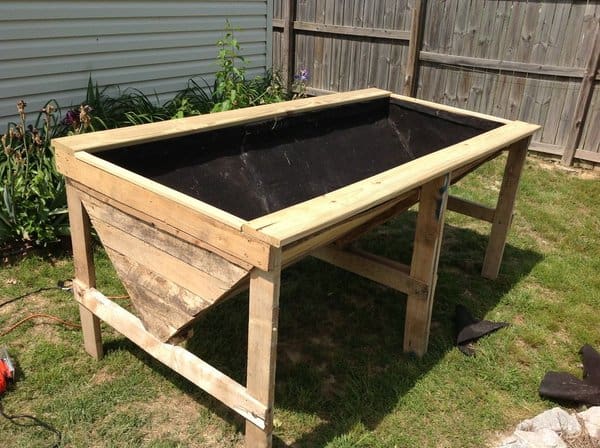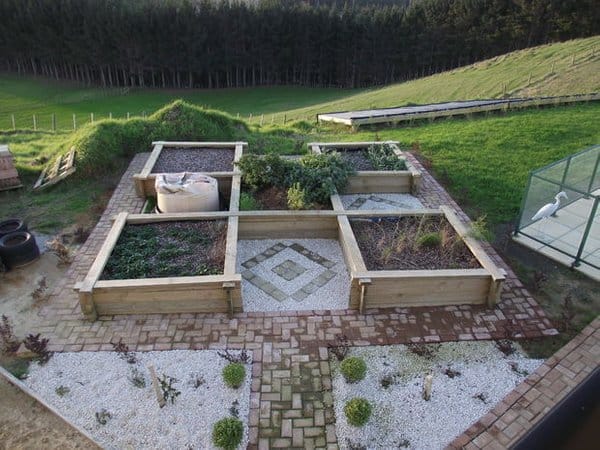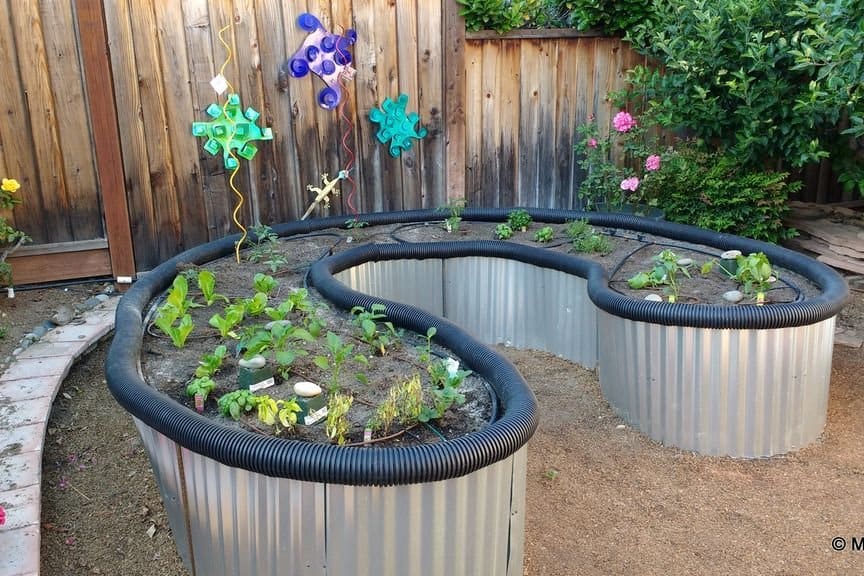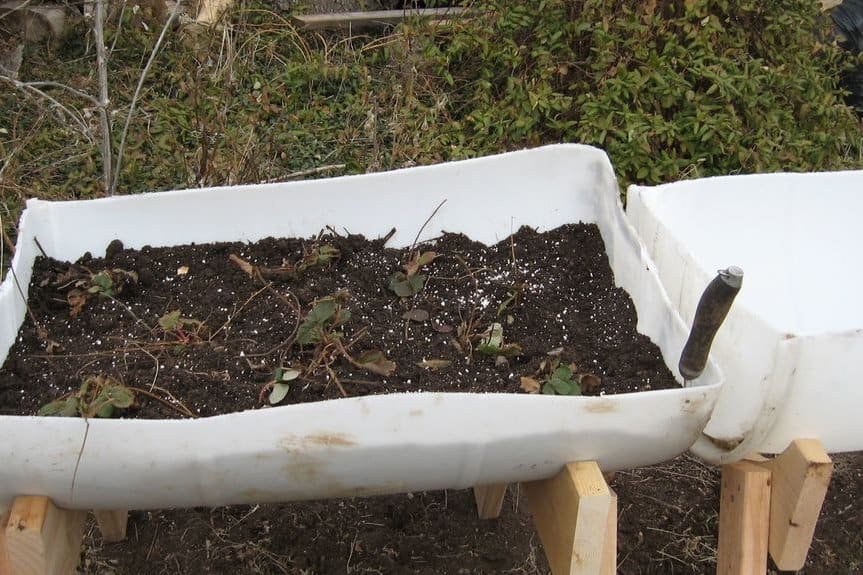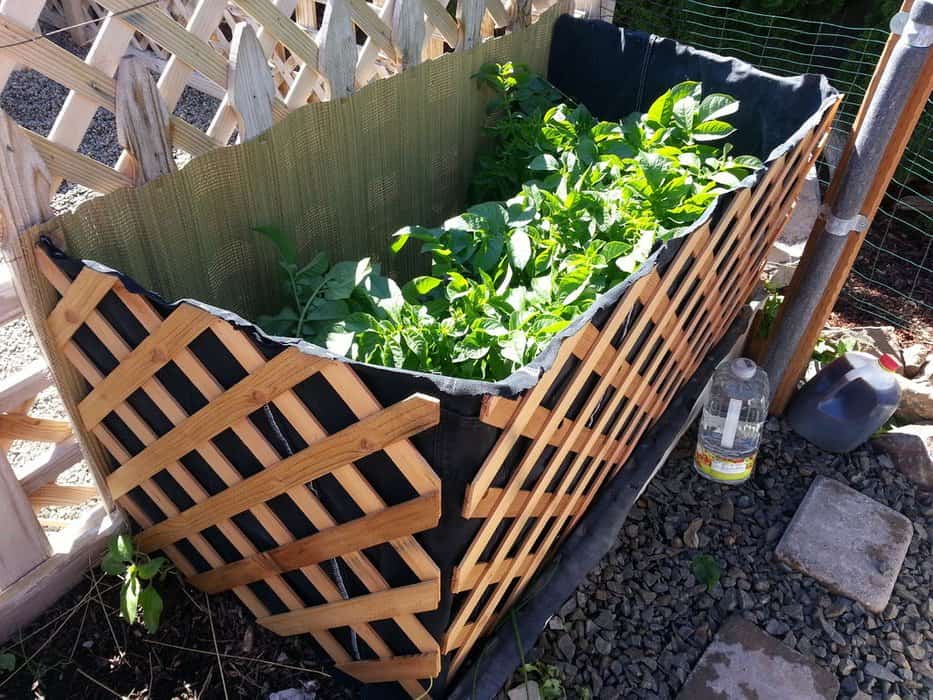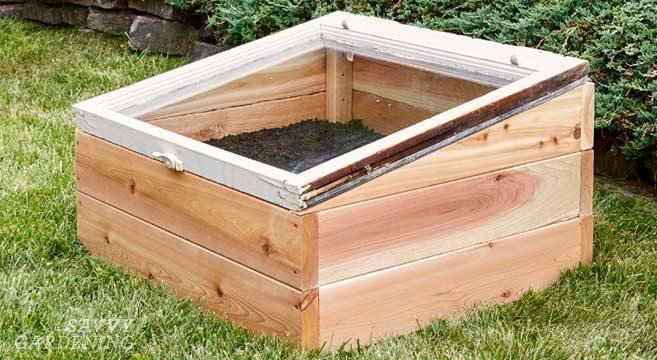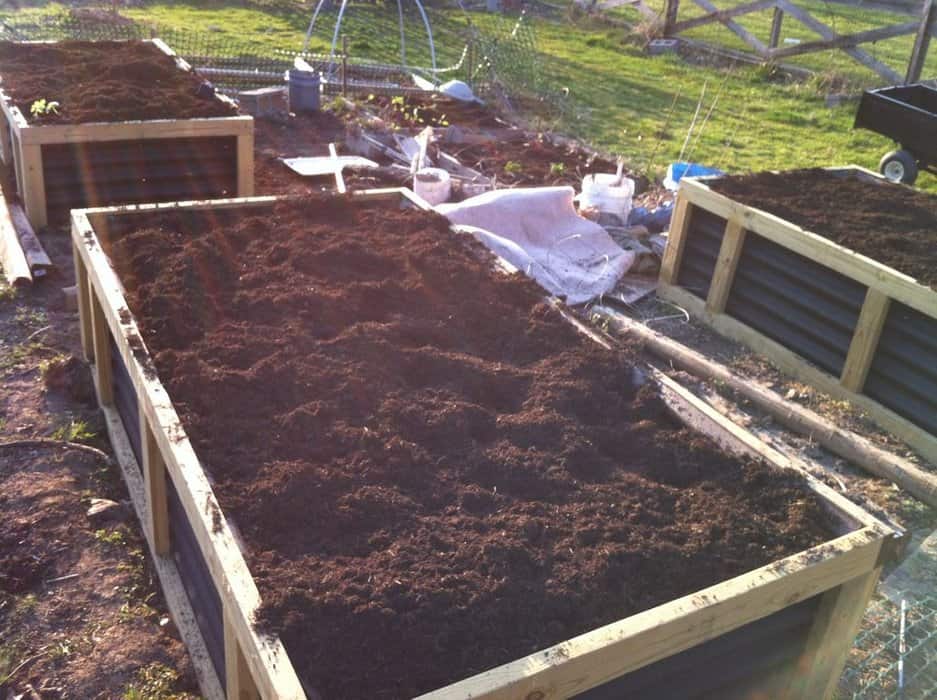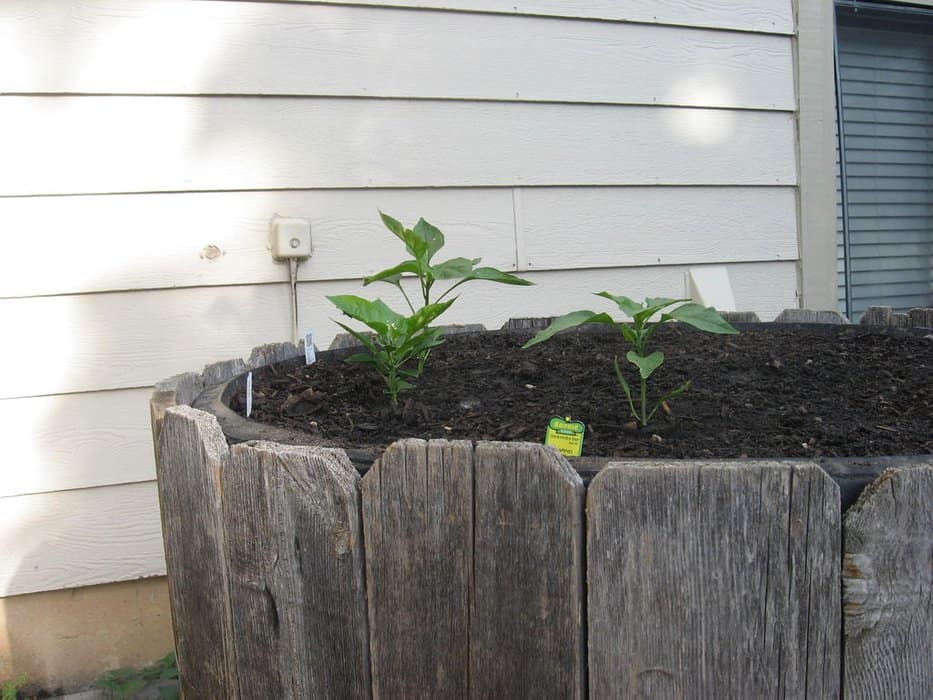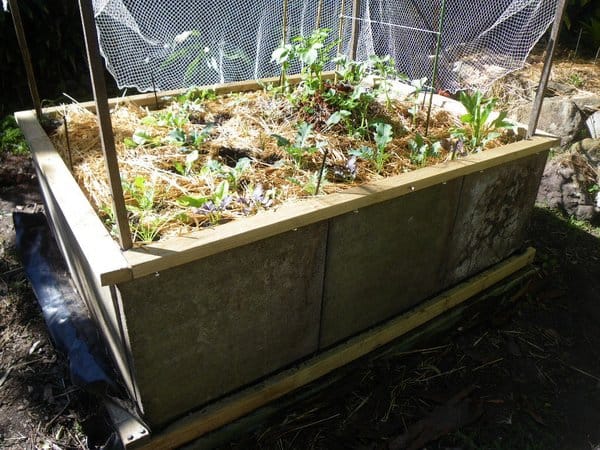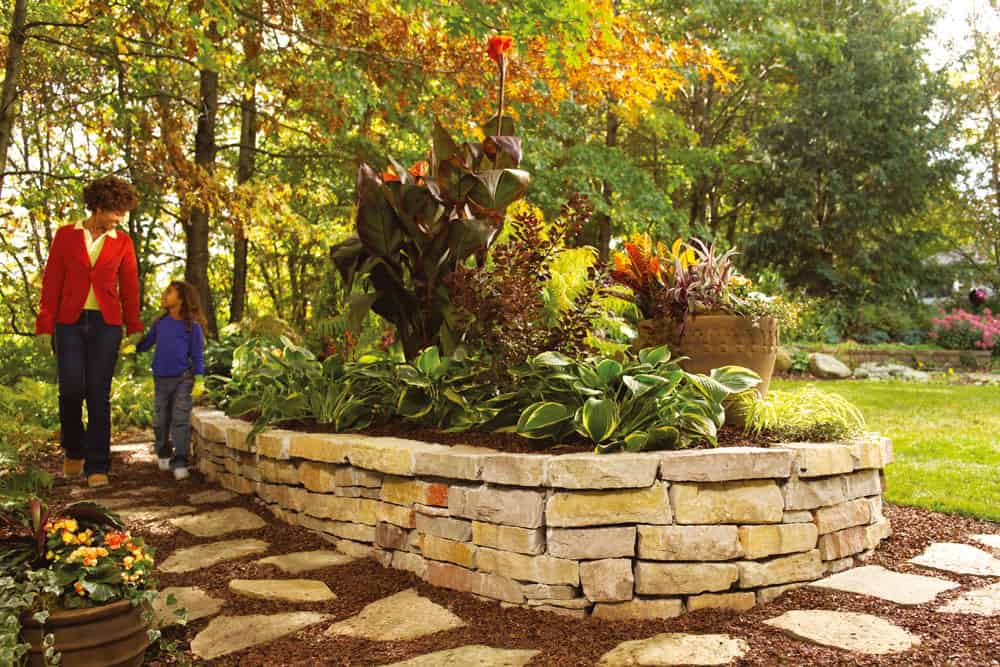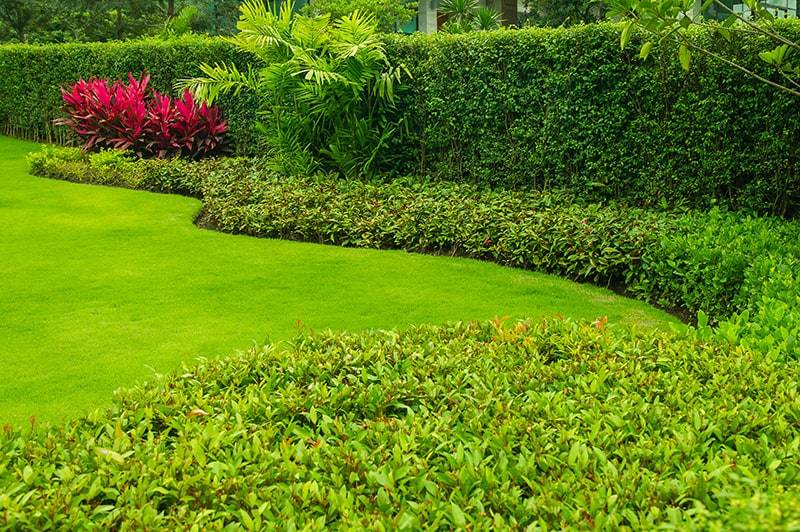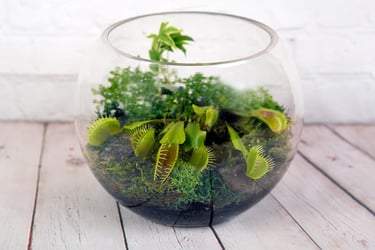window.adthrive.cmd.push(function() { window.adthrive.disableAds(); }); ... Read More
- Home >
- 24 DIY Raised Garden Bed Plans & Ideas That You Can Build In Your Garden
24 DIY Raised Garden Bed Plans & Ideas That You Can Build In Your Garden
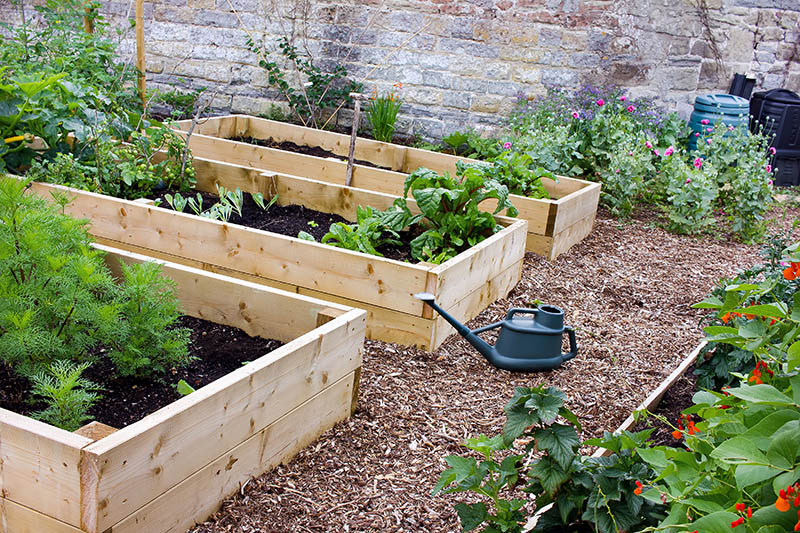
When you hear the term “raised bed”, the image of a plain wooden box filled with soil comes to mind, doesn’t it?
However, did you know that there are a lot of different types of raised beds out there?
First of all, there are many varieties of wooden raised beds. And secondly, you can build your planting bed from other materials such as metal, concrete, stone, or from repurposed objects. The diversity is surprising, and talented gardeners and makers are coming up with new designs all the time.
Advantages of Raised Beds
No matter what form they take, the advantages of raised beds are many:
If you have low quality or polluted soil on your property, You can build a raised bed of your choosing at a spot you consider ideal and fill it with high-quality soil and compost. For home-level gardening, this is much easier to do than fixing the original soil.
If you don’t have permission to dig in your yard, building a raised bed will probably be okay.
You can revive empty concrete surfaces and turn them into gardens by using raised beds – without the need to tear up everything.
In most case, a raised bed is easier to secure from both wild and domestic animals than average ground-level garden beds. They are also easier to protect from frost.
Gardening in raised beds – especially the tall ones – is much easier on your back.
You might be able to repurpose/upcycle objects such as wheelbarrows and old tires to build planting beds; by doing that, you contribute to solving humanity’s global waste crisis.
Planting Raised Bed DIY Projects
Here is the list of 24 raised bed projects you can build on your own. The difficulty of these projects vary, so choose wisely based on your level of experience.
One thing is certain – there’s something in there for everyone.
Example 1: Old Automobile Tire Raised Bed
Used car tire raised bed is one of the simplest types of raised beds you can make. Although they are popular among gardeners who are extra environmentally conscious and like to upcycle, many will use them simply because they are so easy to turn into beds.
This particular tutorial demands some cutting (and tires can be hard to cut through!), but the rest is simple – you just lay a tire on the ground and fill it with soil. You can paint it to make it less raw-looking.
Many people make tire raised beds without any cutting – but just by positioning, painting and filling with soil.
This particular tutorial suggests an additional step – cutting one sidewall of the tire to use the full upper surface for planting. The sidewall is not wasted either but used as a practical tree ring.
Pros: Easy to obtain, easy to make, recycling.
Cons: It might leach harmful chemicals (debatable) and overheat in the sun if not protected by a light-colored cover.
Difficulty level
- Easy
Example 2: Upcycled Wheelbarrow Raised Bed
Giving your trusty (and rusty) old garden wheelbarrow a new life in the form of a raised bed is so easy: you just have to add some holes in the bottom (according to the instruction please) and fill it with soil!
Additionally, you could use a pond liner to prevent the cart from rusting as well as leaching metal and paint components into your soil and your plants, if you are worried about that possibility.
Pros: Simplicity, mobility, recycling.
Cons: Will rust in time, limited volume.
Difficulty level
- Very Easy
Example 3: Neat Classic Raised Bed Planting Box
As you will see for yourself, in this article I will cover a lot of innovative, original and unusual raised bed projects. But what if you just wanted the good old wooden raised bed, with its trademark simplicity and classic (wooden) outlines?
If that is what you were looking for, here is a perfect project for you – a small, neat board raised bed that will fit in any garden both terms of style and size, all explained by detailed instructions.
To make things even better, it was completely made from recycled wood.
Pros: A classic and nicely built raised bed.
Cons: Hard to find; the size might be a limitation for growing some larger plants or crops, but you can always change the measures.
Difficulty level
- Easy
Example 4: Keyhole Raised Bed From Reclaimed Building Materials
Keyhole raised beds are cool because they give you easy access to all parts of your raised bed, unlike the completely round ones (reaching the center is a bit of a challenge with those).
This project is was made out of upcycled (free) materials – concrete blocks as a base, plus old chimney bricks for aesthetics – as well as for some extra height.
The tutorial goes into detail about many useful steps, from instructions on making the bed perfectly round, to ideas about fighting weeds.
Pros: No tools needed, free materials, smart design.
Cons: Involves heavy lifting, might look a bit too crude-looking for some.
Difficulty level
- Easy/Medium
Example 5: Octagonal raised beds
Tired of both square and round raised beds? Here is a tutorial for making beds in the shape of octagon!
Besides being unusual, this shape will allow bigger volumes of soil while still remaining stable and easy to move around before filling. Also, it can help you create an interesting path pattern between each bed if you make several of them, like in the tutorial.
Pros: Interesting shape, stable, voluminous, light construction, well-isolated and rot-proofed.
Cons: Takes skill and tools to make, some may not like plastic wrapping on the outside; it is hard to reach the center of the bed.
Difficulty level
- Advanced
Example 6: Pyramid Raised Bed
Just as the stories of a building allow you to fit more people in a limited surface area – more stories in a raised bed will allow you to fit more plants into a limited space. However, since plants need sunlight you can’t just build one bed a top of the other. A pyramidal bed is an answer on how to have it all.
This pyramid is a screwless design, which adds to its awesomeness and makes building a bit easier.
Pros: Cool design, more plants in a limited area
Cons: The wood is not hydro-isolated by plastic lining and it would be hard to fit into the design – might rot in time or leach chemicals from the wood into the soil if it has been treated. The winning option is to use really durable wood such as cedar.
Difficulty level
- Medium
Example 7: Concrete Pavers Raised Bed
Here is another example of practical upcycling of unused building materials. Concrete pavers are sturdy and lasting, so you won’t have to worry about decay as it is often the case with wood.
This particular tutorial also gives good advice on how to stop tree roots from growing into your bed, which could be applied to other designs as well if you have the same problem as the author.
Pros: Sturdy, no decay,
Cons: Involves heavy lifting and takes additional work to secure, not quite aesthetically pleasing
Side note: Concrete will hold more heat than wood, especially when exposed to the sun. This may be good or bad depending on what you will be growing, but it is something that should be considered either way.
Difficulty level
- Medium
Example 8: Wooden Stick Raised Bed
This design uses natural wood and big branches to create the most prominent part of the bed, in a similar manner you would make a primitive fence.
In spite of the very basic (and in my view beautiful) look, the plan is well designed – with precisely described ways to make the design stable, durable, and as water-proof as possible.
Pros: Beautiful natural contour and overall look, free material
Cons: It is challenging to fix irregularly-shaped branches in line, especially if you don’t want the liner to show; by accidentally introducing diseased branches, you could introduce potential pests into your garden.
Difficulty level
- Medium
Example 9: Modern Raised Indoor Planter Box
This modern planter has limited volume, but it looks stunning. It was designed as an indoor planter, which will enhance your room with the minimalism of its sleek modern lines.
Although it looks half-metal, it is an all-wood project which can be done in any garage workshop with hand tools and some additional effort.
The original plater is designed for indoor use; because of that it features a plastic pot inside the planter, and the wood is not really water resistant. However, for outdoor use, the author suggests using cedar wood which is common for exterior plant boxes and does no harm to the soil.
Side note: the author uses some serious, professional power tools. However, the entire planter can be made with hand tools as well, only at a slower pace.
Pros: Minimalistic, sleek, all-wood, tall, with an additional shelf.
Cons: Designed for indoors; might be a bit challenging to do without professional tools.
Difficulty level
- Medium/Expert
Example 10: Modern Outdoor Planter Box
This project is really similar to the previous one in terms of style, color, and the dominant material. However, these boxes are nearer to the ground and much more voluminous – which makes them true planting beds, and not just planter holders.
Another difference is that these Outdoor Planter Boxes include metal elements for additional strength. The author deals with cutting and working them himself, but as there’s only a few of them, you can easily get a pro to do it for you.
Pros: Sleek looking, quite a lot of volume, can be used outdoors,
Cons: Might be a bit challenging to do without professional tools; it is not specified how to choose or treat the wood to make it long-lasting in the outside conditions (though you can certainly learn this through other tutorials).
Difficulty level
- Medium/Expert
Example 11: Pallet Board Raised Bed
Motivated by wanting to save some money, the Instructables user elco_chan designed this classic, slightly rough looking tall planter box for outdoor use.
The steep/triangular cross-section of the planter means that it has reduced volume; however, this will make it more stable and pallet boards will be less prone to cracking up under pressure than with a typical square design.
Elco_chan also warns about one important thing: the quality of pallets, to be more precise – the wood pre-treatment methods. He points out that using heat-treated wood is the safest option, and never to use the ones chemically treated with toxic methyl-bromide. All pallets should have a mark by which you will know this. This subject is rarely touched upon in pallet tutorials, and it is certainly important for gardening.
Pros: Cheap and stable.
Cons: Some may not like the rough exterior of pallet boards; possibly not enough space for plants with large roots.
Difficulty level
- Medium
Example 12: No-Nails Raised Plant Bed
This is a classic, no-dig, large wooden planting bed that uses notches instead of screws and nails. Although you can prepare the materials anywhere you see fitting, because of the bed’s size, you will actually assemble it at its final destination.
The author of the tutorial also makes an interesting case for using pressure treated timber – something considered a no-no by many gardeners.
Pros: Screwless assembly, simple design.
Cons: Some may still be reluctant to use the pressure treated wood – but any other option will also work well.
Difficulty level
- Easy
Example 13: Metal Roofing Sheet Raised Bed
In his instructable, Mr. Marshall explains the advantages of metal (roofing sheets) as raised bed material – it can often be obtained for less money than timber, it can easily be formed into an irregular, organic shape, and there is no need for precision cutting.
The naturally sharp edges of the metal sheets were covered with some drain pipes – also easy to cut and install. The metal combined with pipes gives the entire construction a slightly retro-sci-fi look.
The tutorial also delivers cool advice on how to painlessly load the grow bed with soil.
Pros: Long lasting, economic, you will be able to create atypical interesting shapes.
Cons: Metal will become very hot in the sun, so watch out for that.
Difficulty level
- Easy/Medium
Example 14: Barrel Raised Bed
If you collect rainwater, you must have some old rain barrels laying around. And if you do (or somebody you know does), you can easily turn them into grow beds by cutting them in half.
Using rain barrels has one big advantage – the rain barrel plastic is usually food grade, which means no harmful chemicals will leach into your soil.
Additionally, to make a raised grow bed, you can put the barrel halves on easy to build a wooden base.
These barrel raised beds might not be really decorative, but they are easy to make and practical to use.
Pros: Safe food-grade plastics, the material usually easy (and cheap) to obtain, easy to build (some cutting included).
Cons: The looks.
Difficulty level
- Easy
Example 15: 45-minute Potato Raised Bed
Potatoes are generally undemanding, but for high yield – you will need a voluminous raised bed. Also, the one that can be easily taken apart is a good option if you would like to just pour out all the soil and potatoes out instead of digging through the entire bed while searching for those last couple of potatoes when the time comes to harvest them.
This is one super-simple project features all of that. It uses old (jeans) fabric and repurposed trellises, so if you are into recycling, it’s all the more perfect.
Pros: Easy and quick to build, uses recycled/repurposed materials, ideal for potato growing.
Cons: Don’t expect for the bed to last more than one growing season.
Difficulty level
- Easy
Example 16: Cold Frame Raised Bed
Planting early in the year has a lot of advantages, especially if you are growing veggies. However, frost is always a threat early in the spring. You can ensure against its disastrous effects by making a bed with a cold frame.
This cold frame bed uses screen door closers to stay open and close, making it easy and trouble-free to ventilate and water plants.
Some similar projects use old windows instead of custom made cold frames, so if you are into upcycling or have old windows laying around – check out the next example.
Pros: Easy construction, a very practical bed to have in every garden.
Cons: Plastic cover is lighter, safer and, but also less transparent and good-looking.
Difficulty level
- Easy
Example 17: Old Windows Cold Frame Raised Bed
Old windows are a treasure for every maker, especially a maker-gardener. Besides the fact that replacing them with plastic ones is quite questionable. People have even built entire glasshouses or even real houses out of them.
Fortunately, using them to make a cold frame is a lot easier!
This project offers a building plan and detailed instructions, as well as some suggestions for improvement (e.g. using automatic vent openers).
The cold frame will basically work as a glasshouse, so you can grow winter vegetables, or start other seedlings early.
The wood is not isolated from soil moisture, so if you want to make the bed more lasting, you should be very careful to select a durable type of timber or add an appropriate plastic liner.
Pros: Easy construction, repurposing old windows.
Cons: You will need to be careful when propping the cold frame open with the stick – if the window falls down, it will most certainly get shattered.
Difficulty level
- Easy/Medium
Example 18: Hugelkultur – No Irrigation Raised Bed
Hugelkultur is a technique where you bury wood at the bottom garden bed to reduce or eliminate the need for additional watering.
It is debated if this works or not, but you can do some research to see for yourself if it makes sense and if you are willing to try it. I have never done it myself (yet), but the creator of this tutorial claims that he never needs to irrigate his beds and that everything grows perfectly.
As for the raised bed itself, it uses a combination of a DIY wooden frame, roofing sheets (different types are considered) and a plastic liner in the form of Bagster dumpster. The choice of basic materials makes it a good scrap/recycling project.
Pros: Easy construction, a chance for repurposing materials.
Cons: Some question if the hugelkultur method really works
Difficulty level
- Easy
Example 19: Stacked Up “Advanced” Old Tire Raised Bed
Old automobile tires have been featured in my first example, and here they are again as we approach its end. And it is no wonder – tires are one of the objects that have actually started the whole raised bed fad in the mid to late 20th century.
This project is an “advanced” version of that simplest tire raised bed idea, but only in the sense that it gives you more volume because it uses multiple tires. It is still simple to build.
Because you’ll be building a tire tower, you will have the possibility to line the raised bed with wooden boards, which will not only make it look more natural but also prevent the tires from getting overheated in the sun, which will help your plants stay healthy. Also, overheated tires leach more potentially harmful chemicals.
Speaking of the chemicals issue, the author of the tutorial offers an interesting opinion on the issue at the end of his article. Although it is worth considering, I would still err on the side of caution and not grown anything edible in tires, especially since he nicely points out – we don’t even really know what’s in there!
Pros: Easily available material that would otherwise be landfilled; easy to build.
Cons: There will always be that uncertainty about tires leaching chemicals into the soil.
Difficulty level
- Easy/Medium
Example 20: Concrete Pannels Raised Bed
Whether will like it or not, all wood is prone to rotting. The fact that a wooden planter won’t last a lifetime isn’t really an issue for some people, but for those that would like their raised bed to be a truly permanent part of their garden landscape, other materials are worth considering.
Of course, one of them is concrete – durable and moldable. Unlike my previous concrete bed example, this one shows you how to create DIY custom-sized molded panels – which means you can create an average or smaller-sized raised bed out of concrete.
The instructions are detailed, and I would dare to say that even if you never worked with molding concrete – this tutorial is good enough to help you get started.
Pros: Long lasting solution, modular, no need for plastic liners.
Cons: Even when the concrete is neatly molded with looks in mind, it can look a bit dull (though that depends on your personal taste).
Difficulty level
- Medium/Expert
Example 21: Planter Wall Blocks Raised Bed
Here is a way to build a raised bed that is almost as easy as playing with children’s building bricks.
By buying planter wall blocks and using them as cornerstones of your bed, the only thing left to do is to stick chemical-free wooden boards in the designated spaces, additionally, fix the blocks into place, and that’s it. You get a ready-made solution which you can still customize according to your needs.
This video shows the most basic setup, but if you do some research, you will see that the blocks can be stacked on top of each other (and secured with a rod) to create higher raised beds.
Pros: Really easy way to build your raised bed.
Cons: Might not be available outside of the U.S.
Difficulty level
- Easy
Example 22: “Stone” blocks planter
The title of this tutorial is a bit misleading because it actually uses cast-concrete blocks (meant for freestanding and retaining walls, not for paving) and not stone. Still, it is useful to get you introduced into building with blocks of any kind, especially since it shows you how to create a leveled base that will ensure you can stack the blocks evenly.
Besides, cast-concrete blocks have an advantage – they can be re-shaped and modified to make them better fitting, which is very hard to do with stone
In order to secure the raised bed wall, the author uses masonry construction adhesive, which is an easier solution than classic masonry.
Pros: Pretty easy to build for a stone planter.
Cons: It is concrete, not real stone.
Difficulty level
- Medium
Example 23: Dry-Stone Raised Bed
If you are craving some real stone for your garden bed – here it is. This Australian tutorial offers step-by-step instructions on how to build a dry stone raised bed.
Natural stone has its advantages, and that is why it is loved by many. It blends perfectly in any outdoor setup, it ages nicely and will fit with any vegetation. If aesthetics is truly important to you, it might be worth the effort to build a stone bed.
Since stones are heavy, you won’t be able to get away with some adhesive like in the previous tutorial. The stone needs mortar to be really secure. Some people choose to simply stack the stones, but it goes without saying that this method has its risks.
Pros: The beauty of natural stone is hard to match.
Cons: Requires true masonry work (though on a small scale).
Difficulty level
- Expert
Example 24: Reclaimed Cedar Planter Bench/Raised Bed
Back to good old, warm timber. This lavish woodworking project features a spacey bench, two smaller planter boxes on the sides, and two big raised beds behind the seat. It is an all-wood project, plus made from reclaimed cedar wood, making it extra environmentally friendly. The moisture is well thought off and taken care of by utilization of the pond liner.
The world would be a much better and nicer place if all front yards and city parks had these – sowed with pollinator-friendly dazzling flowers.
Pros: Original, useful, cozy-looking, a lot of potential for an environment-friendly garden.
Cons: The size and the complexity demand skill and experience, or professional help.
Difficulty level
- Expert
Conclusion
As you have learned by reading this article, raised beds can be much more than “planter boxes”. You can use various materials to create different raised beds in very different shapes, sizes, and styles. You just have to think outside of the box. And if not – the good old (planter) box is perfectly fine!
Related Content
-
20 Cool & Thoughtful Gifts For Gardeners
-
What is Perlite? What is its use in the garden?
Have you ever used a bag of commercial potting soil? If so, you may have n... Read More
-
All about Spider Mites and How to Get Rid of Them
Home growers and gardeners tend to be quick to learn one of the most uncom... Read More
-
Coconut Coir – What It Is, Varieties, and How to Use It
The growing medium meets soil additive, coconut coir (or coco coir for sho... Read More
